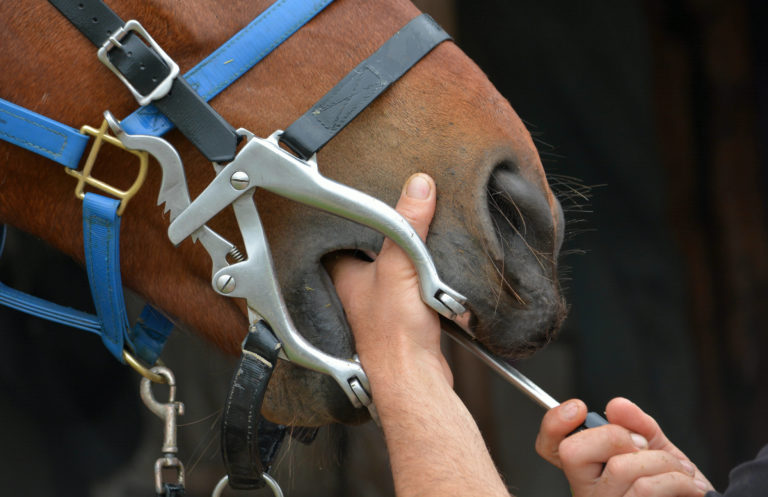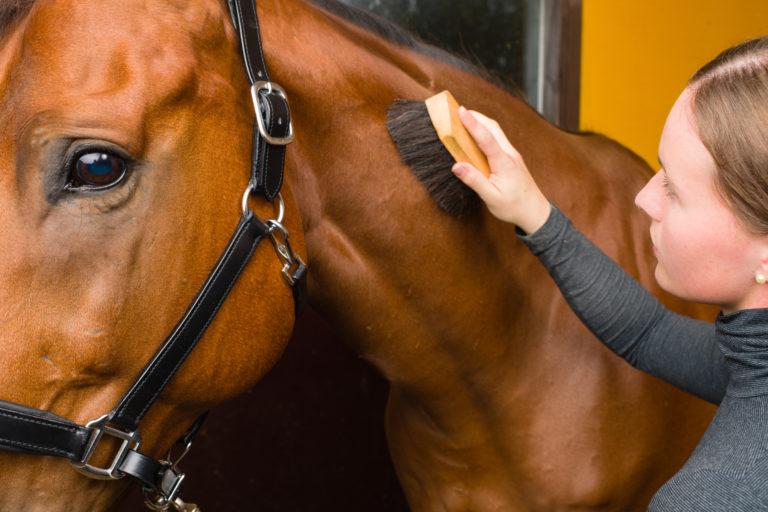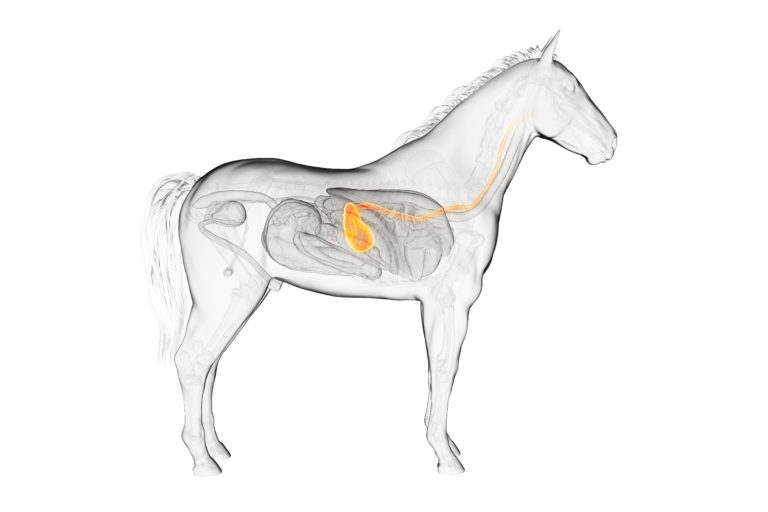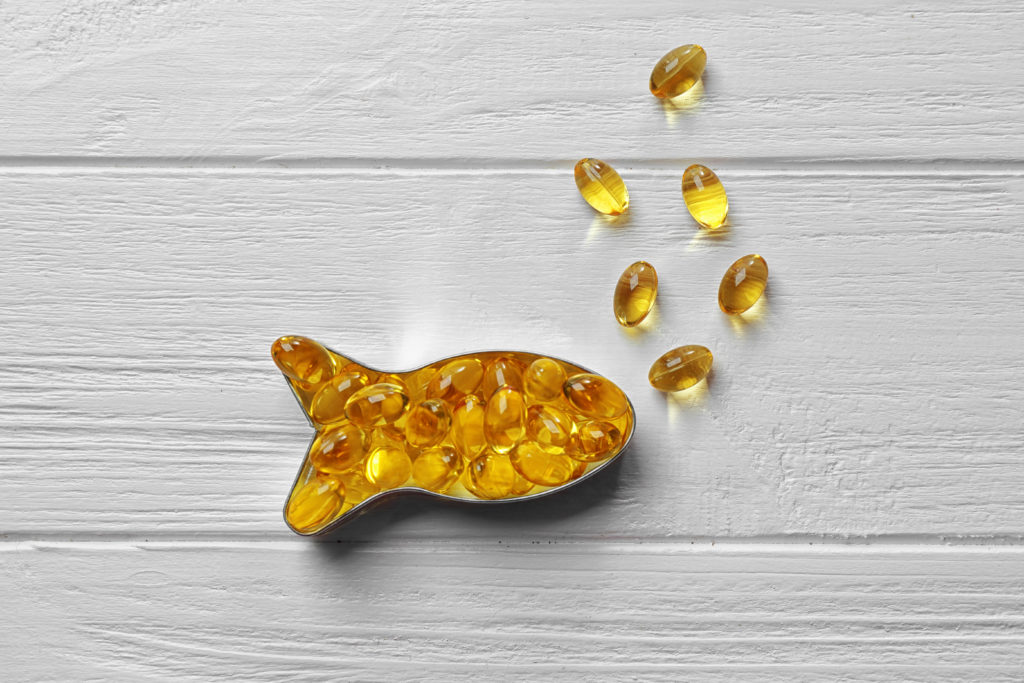
Coat shine
By Hanna Botha, MSc Equine Science
Coat shine provides an indication of the health and overall wellbeing of the horse. Long, dry or “starey” coats that don’t shed often or at the right times of year could point to a horse with health or nutritional issues. Taking a holistic view of a horse’s overall wellbeing will ensure the root cause of coat issues is found. To take this approach you will need to consider a variety of things, before nutrition. These include:

Worm burdens: To check that your horse does not have a high worm burden, perform a faecal egg count. This ensures that you get an accurate result and that you avoid deworming unnecessarily. High worm burdens lead to dull coats.

Dental issues: Always ensure that your horse’s teeth are in good condition. Check young and old horses every six months for dental issues and check the average adult horse every 12 months. If issues are noted in between check-ups, then obviously call your dentist for another appointment.

Grooming: A proper grooming session every day will help to stimulate blood flow in the skin, which will bring good coat-enhancing nutrients to the hair follicles and help promote quality hair growth.

Health conditions such as ulcers and Cushing’s disease: These issues often present with additional symptoms, and therefore there is no need to panic or suspect all horses with a dull coat of having such issues. However, it’s worth familiarising oneself with some of the other symptoms that these fairly common issues can present with and getting a full vet check done if other problems are suspected.
Only once these steps have been assessed can nutrition be considered to be the culprit for the dull coat. Protein, vitamin and mineral imbalances can all affect coat condition, so providing a well-balanced diet is the key. A lot of owners agonise over what concentrate feed to provide their horses with and are left disappointed when, even after choosing a top-quality feed, they still don’t see the coat shine they expect. This doesn’t necessarily mean the feed chosen isn’t a good feed – it could just be that it is not being provided in the correct amount or balance for the horse in question, based on the rest of his diet. Having a nutritional consultation will allow the horse’s diet to be assessed thoroughly to ensure it is correctly balanced.
Nutrients important for coat condition include essential amino acids (methionine and lysine); vitamins E, C, D and A; the B vitamin biotin; and minerals such as zinc and copper.
Equine-specific yeast cultures such as Yea-saac will also aid in promoting the good bacteria in the gut, enhancing the utilisation of fibre and minerals in the diet, and thus often creating an improvement in coat quality.
Other nutrients that might also help support coat and skin health are essential fatty acids (omega-3 and -6 oils). Dietary fats like these fatty acids serve as carriers for fat-soluble vitamins such as A, D, E, and K and therefore providing additional fats in the diet can help the utilisation of these nutrients

Generally, for improving coat condition, additional omega-3 fatty acids (good sources include linseed and fish oils), which have immune-boosting and anti-inflammatory effects are more beneficial than omega-6 oils (corn oil, sunflower, soya), which researchers believe to be more pro-inflammatory. As omega-3 oils are found in grazing and forage, horses being fed only these ingredients may need an additional supply of omega-6 to keep the balance, whereas horses being fed concentrates and average-minimal amounts of hay and grazing will likely have more omega-6 in their diets and therefore need additional omega-3. In terms of the amount required for good coat condition, as a rule of thumb, around 80-120ml per day would be a worthwhile amount. Keep in mind that horses receiving additional oil will also need more vitamin E in their diet, so ensure that adequate levels are provided in your concentrate or balancer. As with anything in life, balance is key, and that also applies to oils, so once again discuss your horse’s total diet with a nutritional consultant before implementing anything suggested here.
If these minerals, vitamins, yeast cultures and oils are not being provided or are not at adequate quantities, then either look towards a feed with higher levels of these or add a ration balancer to the diet to ensure levels are maintained in balance.
Just don’t forget to also include your horse’s forage when looking at his diet. As a starting point, the base of the diet should always be forage, including access to fresh grass, as this provides vitamin E, as well as the essential fatty acids (omegas) discussed above. Good-quality hay is important, as it will ensure the digestive system is kept healthy, allowing the horse to get the most out of everything he eats. Make sure your forage supply is adequate and of good quality before changing your concentrate.
If you are following all of the recommendations above, then check that you are feeding adequate levels of the mentioned components. Feeds are designed with a certain level of vitamins and minerals specific to the workload/life stage they are designed for, and thus if you are not feeding the recommended levels, it may not be doing exactly what it’s designed to.
